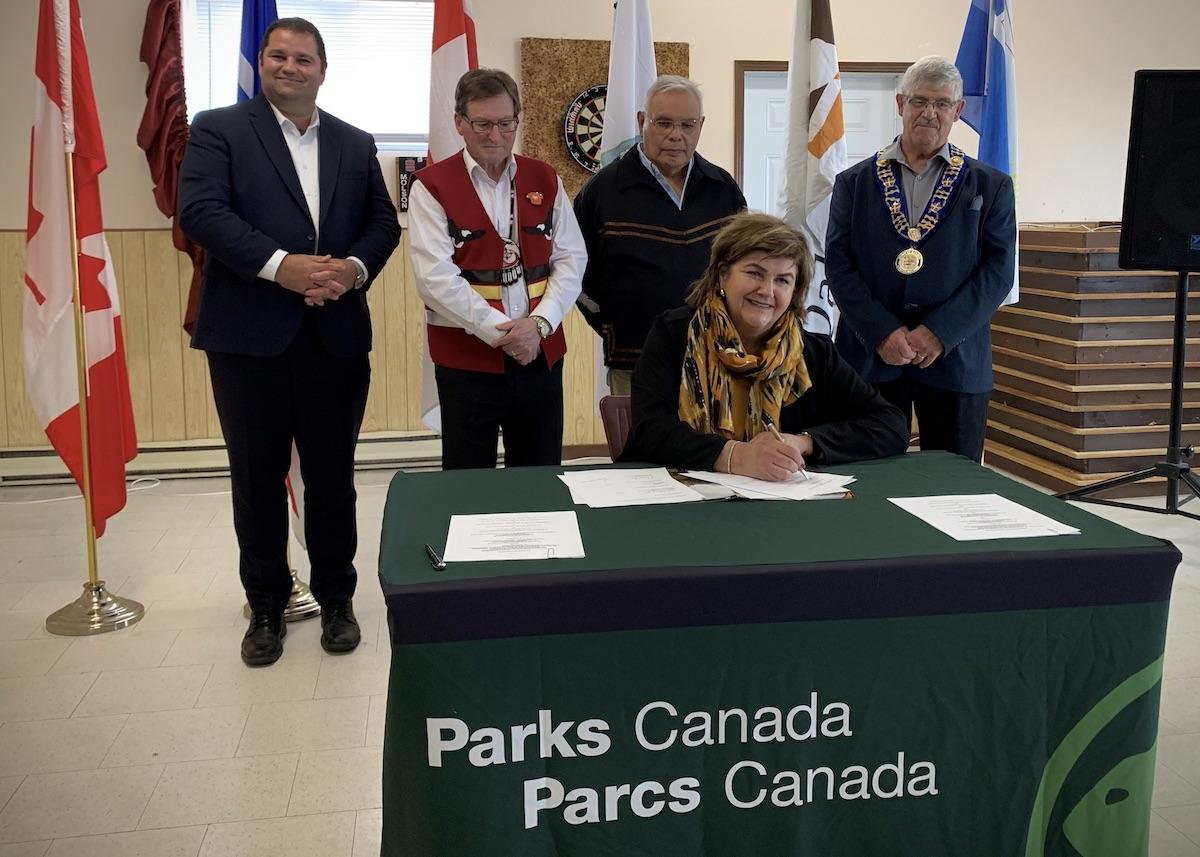
Minister of Rural Economic Development Gudie Hutchings (foreground) co-signed the MOU to consider protecting Newfoundland’s South Coast Fjords. Others included (back row, from left): Minister of Environment and Climate Change Bernard Davis, Qalipu First Nation Chief Brendan Mitchell, Miawpukek First Nation Chief Misel Joe and Burgeo Mayor William Bowles/Parks Canada
Parks Canada and its partners have signed a memorandum of understanding to launch a feasibility assessment to establish South Coast Fjords as a new national marine conservation area.
This vital next step in the process to safeguard marine and coastal waters in Canada was taken during a June 23 ceremony in Burgeo, Newfoundland and Labrador.
A new NMCA in this region would contribute to the government of Canada’s commitment to protect biodiversity and conserve 25 per cent of marine and coastal areas by 2025, and 30 per cent by 2030.
The signing of the MOU underlines the shared interest of Parks Canada, the government of Newfoundland and Labrador, Miawpukek First Nation, Qalipu First Nation and the Town of Burgeo in protecting the natural and cultural integrity of this globally significant ecosystem.
“Establishing new marine protected areas in Canada is vital to reducing biodiversity loss and mitigating the impacts of climate change through nature-based action,” Steven Guilbeault, minister of Environment and Climate Change and Minister responsible for Parks Canada, said in a news release. “Collective and co-operative agreements are crucial to achieving our goals.”
The South Coast Fjords area is among the most productive marine environments in Atlantic Canada and is economically, culturally and historically important to the region’s Indigenous and coastal communities.
By initiating a formal process to study the biodiversity, economic, cultural and historic values of the area through Indigenous and Western knowledge systems, these groups can work collaboratively to ensure the health and longevity of the South Coast Fjords region and promote inclusivity for community groups in conservation planning and protected areas forums.
“As stewards of Mother Earth, we must continue doing our part for there is no greater purpose than protecting and preserving our waters for the next seven generations,” said Miawpukek First Nation Chief Misel Joe.
As Qalipu First Nation Chief Brendan Mitchell said: “You have only to stand at the ocean’s edge to appreciate the power, beauty and significance of water.”
The study area outlined in the MOU is on the southern coast of Newfoundland and spans 9,114 square kilometres and includes Sandbanks Provincial Park.
The area is a biodiversity hotspot due to its wide array of coastal and marine ecosystems including spruce-fir forests, rocky barrens, sand dunes, flat sandy beaches, estuaries, large granite cliffs and deep, glacially carved fjords.
The coasts and waters are home to dolphins, porpoises and many endangered species including Atlantic cod, redfish, leatherback sea turtles and piping plovers. They serve as a critical migration route for more than 20 species of whales.


